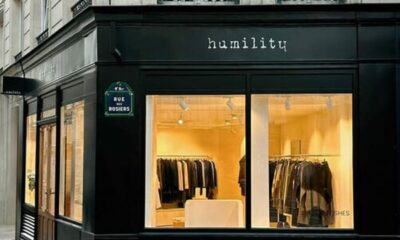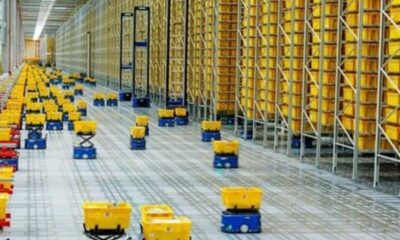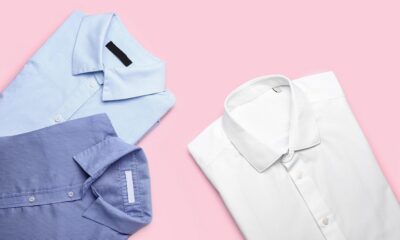Fashion
Swaine and Cambridge satchel owner Compagnie Chargeurs Invest maintains momentum in Q3
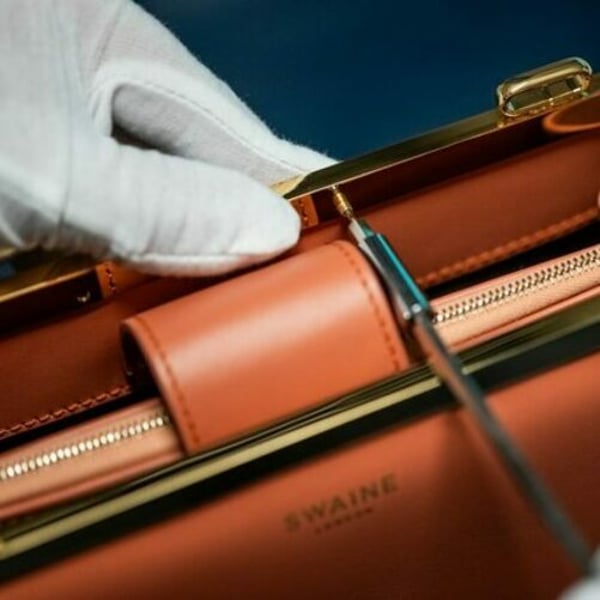
Translated by
Nicola Mira
Published
November 7, 2025
In Q3, French textiles group Compagnie Chargeurs Invest (CCI) has maintained the momentum observed in H1. The group recorded a 0.7% drop in revenue (and a 2.3% organic increase), reaching €164.2 million.
CCI’s Q3 results were very similar to those posted in H1, when it recorded a 0.6% revenue drop, and a 1.7% organic increase. In the first nine months of the year, the group’s Mode & Savoir-Faire segment recorded a 7.5% revenue decline for the Chargeurs PCC division, down to €138.8 million, and a 5.4 % drop, down to €55.7 million, for the Luxury Fibers division. The Personal Goods segment, focused on British leather goods businesses Swaine of London and Cambridge Satchel, plus French company Altesse, generated a revenue of €10.8 million, equivalent to an 18.7% increase.
“Commercial momentum in the second half of the year is particularly strong and points to a promising 2026, assuming comparable macroeconomic conditions,” said CEO Michael Fribourg. “The transformation of our technical textile activities is beginning to bear fruit, and is expected to accelerate significantly in 2026, thanks to the human resources, technological, and operational investments made since mid-2024,” he added.
CCI is currently assessing the opportunity to sell Novacel, the industrial division operating in the high-tech coatings, adhesive tape and special papers sectors. The group said it is seeking for either a partial or complete sale.
“[CCI] is rigorously reviewing the offers received and engaging in in-depth discussions with interested parties, with the aim of fully reflecting Novacel’s unique market position, strong commercial drive, and growth prospects,” said the group.
In fiscal 2024, CCI generated a revenue of €729.6 million, equivalent to an 11.9% growth (and a 10.7% one in organic terms). The group has recently announced that Carla Bruni-Sarkozy has been appointed to its board of directors.
Copyright © 2025 FashionNetwork.com All rights reserved.
Fashion
eBay, Vestiaire Collective, H&M’s Sellpy among Europe’s top 10 sustainable re-commerce marketplaces

Published
December 22, 2025
French refurbished tech e-tailer Back Market is Europe’s top-ranked sustainable resale platform, according to Cross-border Commerce Europe (CCE). Three fashion resale specialists, eBay, Vestiaire Collective and H&M’s Sellpy, were among the ranking’s top-10 platforms, with Vinted in 11th place.
The CCE ranking is based on an analysis of the various players’ CSR pledges, cross-referencing the share of their business that falls strictly in the sustainability category with a weighted audit of over 75 sector certifications (like B-Corp and Fashion Pact). Besides certifications, the CCE methodology also assessed the business models, putting a premium on circularity initiatives (like resale and repair) and the presence of alternative services such as product rental, customisation, on-demand production, etc.
Europe’s top-ranked sustainable marketplace was French refurbished tech e-tailer Back Market, ahead of Etsy (USA), OLX (the Netherlands) and Refurbed (Austria). eBay came fifth, ahead of British used photo and video equipment e-tailer MPB.
Vestiaire Collective, the French specialist in second-hand premium and luxury fashion, ranked seventh, followed by Sellpy (owned by Swedish group H&M), by British used tech specialist CeX, and by another French high-end pre-owned fashion marketplace, Collector Square. Vinted was ranked 11th.
Among the factors negatively affecting CCE’s sustainability rating are the carbon impact associated with air freight, high return rates, and a business model based on fast fashion. China-based businesses raised major ethical concerns in terms of human rights compliance, while lack of transparency on traceability was another factor negatively affecting a marketplace’s ranking.
“The re-commerce market is projected to account for 7.4% to 7.8% of the fashion and beauty industry by 2026, up from 6.9% in 2025,” stated CCE, adding that cross-border e-commerce generates 70% of the re-commerce sector’s sales volume.
In 2025, CCE said that marketplaces accounted for 74% of Europe’s online re-commerce GMV (which was up by 18%), generating a revenue of €90 billion out of a total of €121 billion.
Copyright © 2025 FashionNetwork.com All rights reserved.
Fashion
Humility, La Fée Maraboutée’s sister brand, opens its first Paris boutique in Le Marais
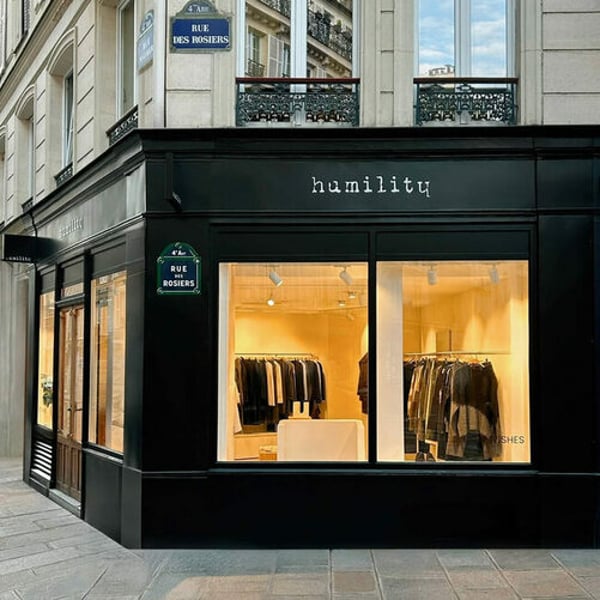
Published
December 22, 2025
Ten years after its launch, Humility has opened its first Parisian boutique. A sister label to La Fée Maraboutée, the discreetly chic womenswear brand is growing at its own pace. It has just opened the doors of its first Parisian boutique in the Marais, at 11 rue Malher, on the corner of rue des Rosiers.
The brand has taken over the space of multibrand retailer Camélia and now enjoys strong visibility in this highly competitive part of central Paris, attracting both French and international customers. It sits within a nearby retail mix that includes Free People, Cotélac, Balzac, Desigual and Cos.
Launched by La Fée Maraboutée founders Jean-Pierre Braillard and Virginie Mangano, Humility distils pared-back womenswear with understated elegance. Established in 2016 with a proposition radically different from the Roanne-based group’s flagship brand, the label swaps bohemian prints for a more architectural, almost monastic, aesthetic.
The current wardrobe champions ‘effortless’ elegance: oversize cuts, structured lines and a discreet colour palette (black, anthracite, chalk, khaki). Key pieces include the precisely cut Riu trousers, apron dresses with a workwear accent and, true to the group’s DNA, knitwear crafted in bouclé or textured wool blends. Pricing, slightly higher than at La Fée Maraboutée, ranges from 140 to 270 euros, with production predominantly in Europe, particularly Italy.
In terms of distribution, Humility remains selective, relying on a network of around 110 specialist multi-brand retailers, such as Solana in Paris and Lilyaké in Bordeaux. The brand is present through this channel in key European markets: the UK, Germany, Italy, Spain, and the Benelux region.

In recent years, the group has also been developing direct sales, both online and in-store. It is testing its mono-brand concept with a pilot location opened in 2023 in its home region, Lyon, at 24 Grande Rue de la Croix-Rousse, a laboratory that has helped refine the customer experience by adopting a concept-store approach and incorporating jewellery and home décor brands. Today, the brand is strengthening its visibility in department stores with around a dozen strategic corners, notably at Printemps Nation in Paris as well as at Galeries Lafayette in Reims and Tours.
The brand is also active internationally, having presented in Taiwan this summer, during the Mode in France event, its spring-summer 2026 collection inspired by the work of Japanese architect Tadao Ando. This collection will, of course, be showcased in its new Paris boutique.
The French group headed by Gaëlle Lelong does not disclose the brand’s financial performance. In 2024, despite a downturn in business, the parent company, La Fée, posted sales of over 37 million euros and remained profitable.
This article is an automatic translation.
Click here to read the original article.
Copyright © 2025 FashionNetwork.com All rights reserved.
Fashion
CITI YEG names Ganeriwal chairman & Goenka vice chairman

Shailesh Goenka, director, Texport Industries, has been elected as the vice chairman of the Group for the same period.
CITI’s Young Entrepreneurs Group has elected Gautam Ganeriwal, executive director of Sitaram Spinners, as chairman and Shailesh Goenka, director of Texport Industries, as vice chairman for 2025–27.
The elections were held at the YEG AGM in Mumbai on December 18, 2025, with appreciation expressed for outgoing chairman Rajjnish Aroraa’s leadership and contributions.
The elections were held during the Annual General Meeting (AGM) of CITI YEG, which took place in TEXPROCIL, Mumbai on December 18, 2025, with active participation from young entrepreneurs representing various segments of the textile industry.
CITI YEG also placed on record its sincere appreciation and thanks to Rajjnish Aroraa of Dicitex Furnishings for his exemplary leadership and valuable contribution during his tenure as outgoing chairman. Under his guidance, the Group strengthened its engagement, initiatives, and impact across the textile industry, CITI said in a release.
Ganeriwal brings rich industry experience and a progressive outlook to his new role. As chairman, he will lead the Group’s efforts in promoting innovation, entrepreneurship, sustainability, and leadership development among the next generation of textile industry leaders.
Shailesh Goenka, as vice chairman, will support the Group’s initiatives and contribute towards strengthening member engagement and industry collaboration.
CITI Young Entrepreneurs Group serves as an important platform for nurturing future leaders of the Indian textile industry through networking, knowledge sharing, and policy engagement.
Gautam Ganeriwal is the executive director of Sitaram Spinners, a well-established textile manufacturing company. With hands-on experience across operations, strategy, and sustainability initiatives, he represents the new generation of textile leadership focused on innovation, efficiency, and responsible growth. He has been actively involved in industry forums and initiatives aimed at strengthening the competitiveness of India’s textile sector.
Shailesh Goenka is director at Texport Industries, a leading integrated textile and apparel manufacturing company. He brings strong expertise in exports, supply chain management, and business development. Actively engaged with industry bodies, Goenka has been a strong advocate for modernisation, global market expansion, and collaboration among young entrepreneurs.
Fibre2Fashion News Desk (HU)
-

 Business1 week ago
Business1 week agoStudying Abroad Is Costly, But Not Impossible: Experts On Smarter Financial Planning
-

 Business1 week ago
Business1 week agoKSE-100 index gains 876 points amid cut in policy rate | The Express Tribune
-

 Fashion5 days ago
Fashion5 days agoIndonesia’s thrift surge fuels waste and textile industry woes
-

 Business5 days ago
Business5 days agoBP names new boss as current CEO leaves after less than two years
-

 Sports1 week ago
Sports1 week agoJets defensive lineman rips NFL officials after ejection vs Jaguars
-

 Tech1 week ago
Tech1 week agoFor the First Time, AI Analyzes Language as Well as a Human Expert
-

 Entertainment1 week ago
Entertainment1 week agoPrince Harry, Meghan Markle’s 2025 Christmas card: A shift in strategy
-

 Tech5 days ago
Tech5 days agoT-Mobile Business Internet and Phone Deals




